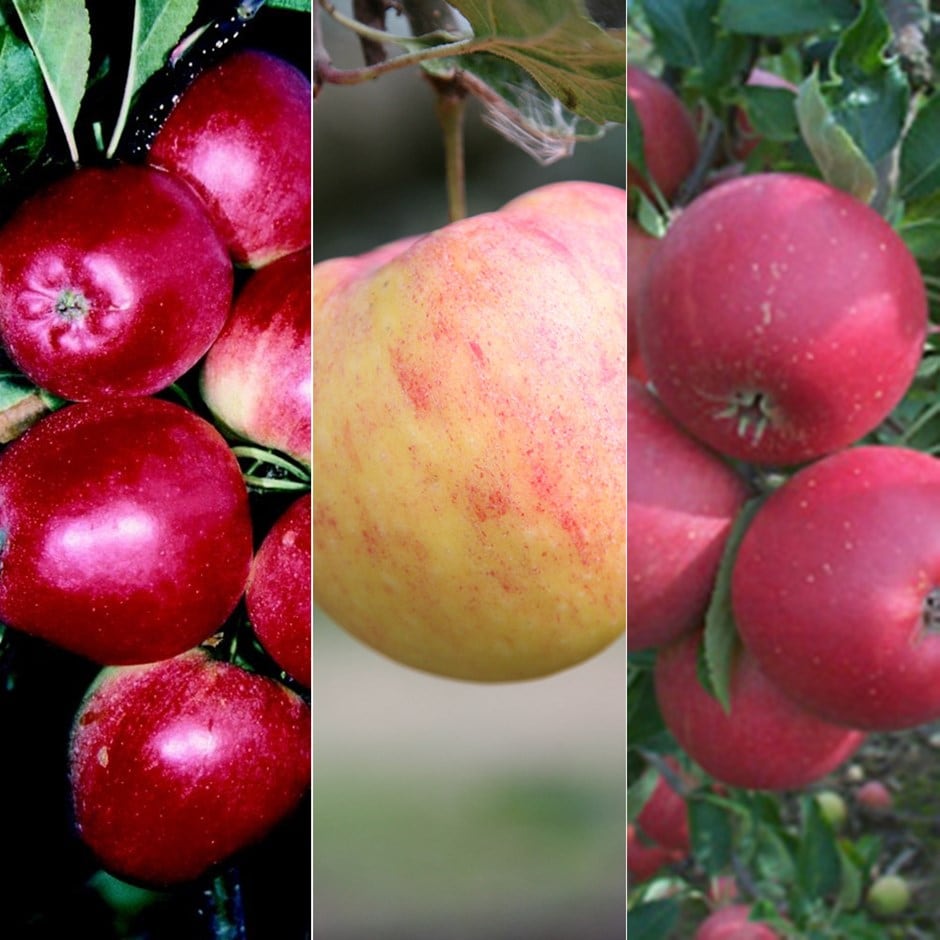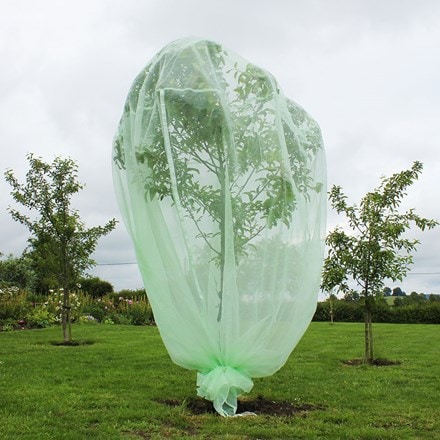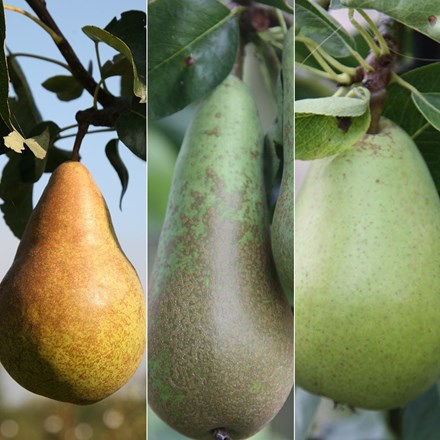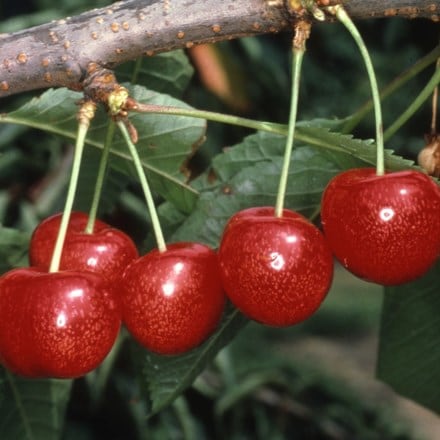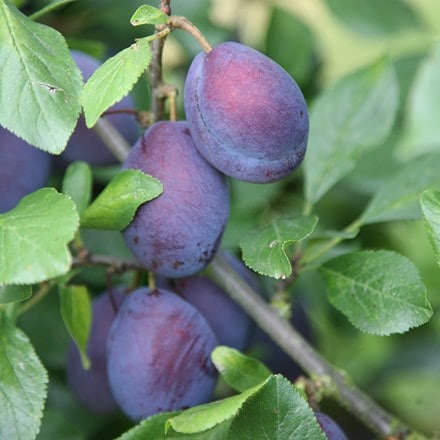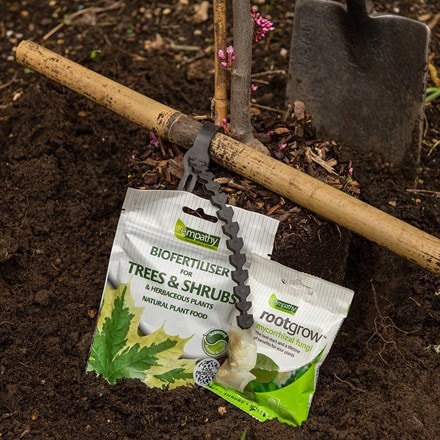apple 'Cox Self Fertile' / 'James Grieve' / 'Katy'
family apple Cox's Self Fertile / James Grieve / Katy
- 12 litre pot | MM106 root stock | 1m
- £169.99
- In stock (shipped within 2-3 working days)
- 9 litre pot | MM106 root stock | 1.2m
- £109.99
- available to order from spring
Delivery options
- Standard £12.99
- Position: full sun
- Soil: moderately fertile, moist but well-drained soil
- Rate of growth: average
- Flowering period: April to May
- Hardiness: fully hardy
A wonderful choice for smaller gardens, this 'family' apple tree bears three grafted branches, each producing a different variety of delicious apples. These include:
'Cox's Self Fertile': Regarded by many as one of the best eating apples, their creamy flesh has a superb flavour and sweet aroma. Ready to harvest in October.
'James Grieve': Producing crisp and juicy, red-flushed, green apples that have remained consistently popular since they were first introduced in 1893. A reliable cropper, the apples can be used for cooking or eating and can be harvested from September.
'Katy': A recent introduction that is proving popular for its heavy crop of bright red fruits, which have a firm, juicy flesh with just the right balance between sweet and acid. Ready to harvest from late August to early September, they're excellent for juicing and making cider.
Pollination information: These apple varieties will all cross-pollinate freely with one another, so there's no need for a separate pollinating partner.
'Cox's Self Fertile': Regarded by many as one of the best eating apples, their creamy flesh has a superb flavour and sweet aroma. Ready to harvest in October.
'James Grieve': Producing crisp and juicy, red-flushed, green apples that have remained consistently popular since they were first introduced in 1893. A reliable cropper, the apples can be used for cooking or eating and can be harvested from September.
'Katy': A recent introduction that is proving popular for its heavy crop of bright red fruits, which have a firm, juicy flesh with just the right balance between sweet and acid. Ready to harvest from late August to early September, they're excellent for juicing and making cider.
Pollination information: These apple varieties will all cross-pollinate freely with one another, so there's no need for a separate pollinating partner.
When planting your apple tree, prepare a hole up to three times the diameter of its root system. Fork over the base of the pit in readiness, incorporating plenty of organic matter into the backfill and planting hole. Place the plant in the planting hole and carefully refill, firming the soil around the roots to eliminate air pockets. Insert stake at this point if required.
Avoiding frozen and waterlogged soil, trees should be planted out as they arrive. If you've ordered a bare root tree, soak the roots in a bucket of water for half an hour prior to planting - or if this is not possible, they can be heeled in temporarily, covering their roots with soil, or potted up.
Keep the base of the tree weed free, fertilise at the beginning of each year water regularly during hot, dry spells.
The main prune should be done in the winter as long as it isn't frosty or freezing. Take out the 3D’s (dead, dying and diseased wood) and create an open shape. Then reduce the leaders back by a third. Aim to create an airy structure without any crisscrossing branches.
In August summer prune. Shorten any side shoots (or laterals) which are longer than 20cm back to three leaves. This will allow the sun to ripen the fruit and encourage more fruit buds. Make sure that the growth you’re cutting away feels firm to the touch.
Avoiding frozen and waterlogged soil, trees should be planted out as they arrive. If you've ordered a bare root tree, soak the roots in a bucket of water for half an hour prior to planting - or if this is not possible, they can be heeled in temporarily, covering their roots with soil, or potted up.
Keep the base of the tree weed free, fertilise at the beginning of each year water regularly during hot, dry spells.
The main prune should be done in the winter as long as it isn't frosty or freezing. Take out the 3D’s (dead, dying and diseased wood) and create an open shape. Then reduce the leaders back by a third. Aim to create an airy structure without any crisscrossing branches.
In August summer prune. Shorten any side shoots (or laterals) which are longer than 20cm back to three leaves. This will allow the sun to ripen the fruit and encourage more fruit buds. Make sure that the growth you’re cutting away feels firm to the touch.
Goes well with
pear Doyenné du Comice' / Conference / Concorde
12 litre pot | QA root stock | 1m
£169.99
In stock (shipped within 2-3 working days)
cherry Morello
9 litre pot | Colt root stock | 1.8m
£49.99
In stock (shipped within 2-3 working days)
Premium tree planting kit with bamboo stake
kit & bamboo tree stake
£21.35
available to order from spring
